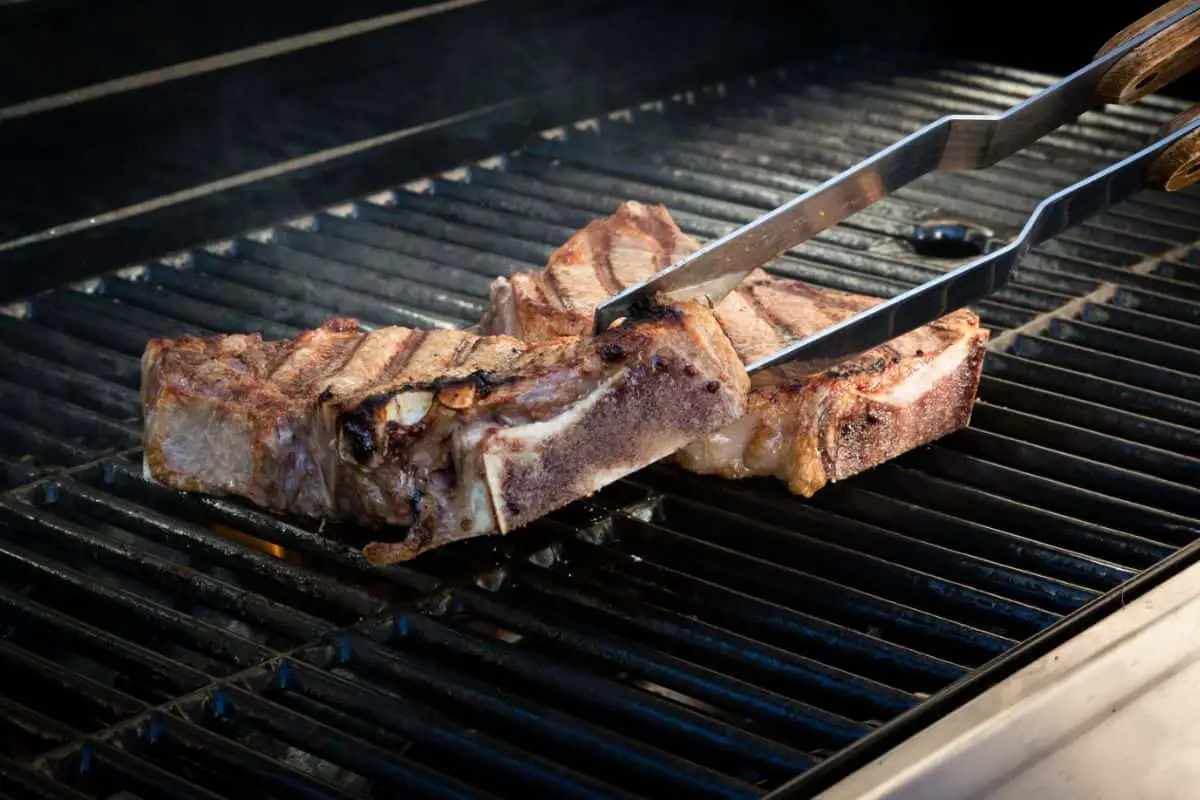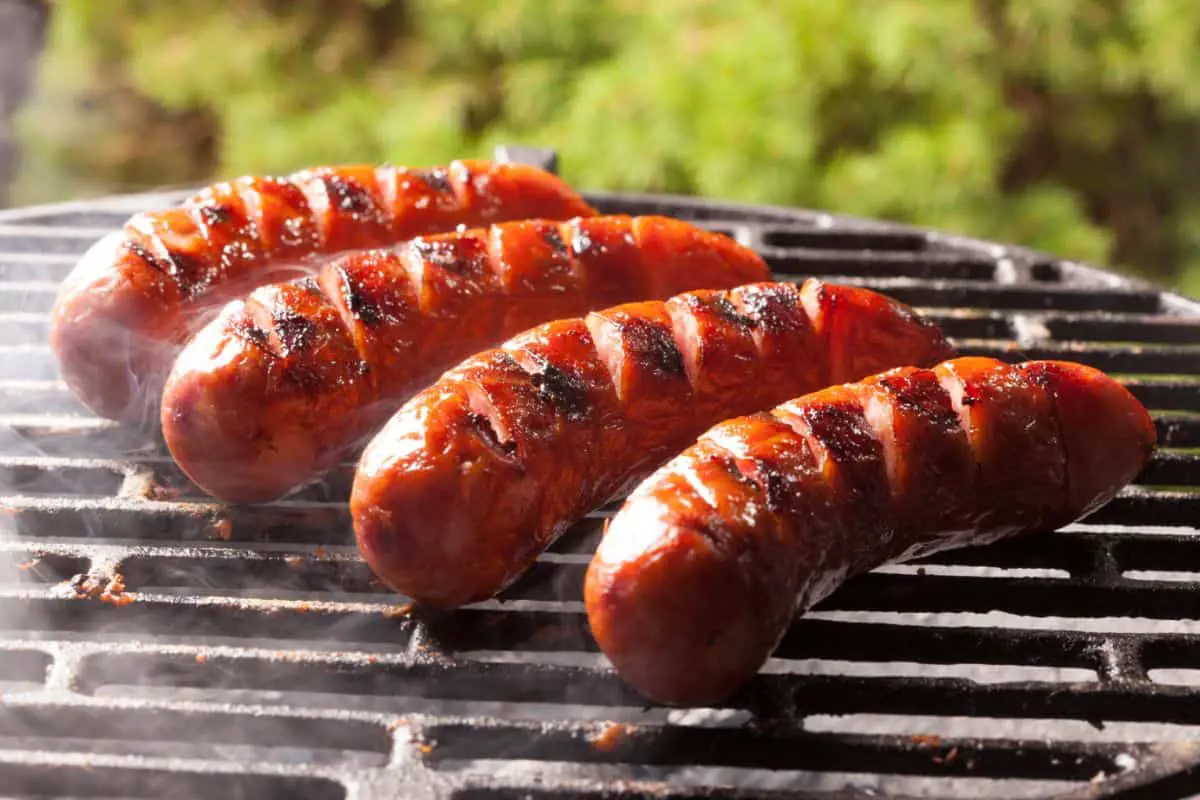Buying a Traeger grill (aka Traeger smoker) is a big investment. You can expect to pay in the region of $600 for entry-level models and an eye-watering $3500 for their premium Timberline XL model. So, as you can see, Traeger grills aren’t cheap!
Before you part ways with your hard-earned cash, you probably wonder if they’re worth the outlay. In particular, you might want to know if they’re well-built and durable and how long Traeger grills last.
Thankfully my Traeger was a surprise birthday gift, so it’s not a question I had to figure out upfront. But I’ve owned my Traeger grill for over a year, and here’s what I can tell you.
Traeger grills are well-designed, well-built grills. The materials and components used are of good quality (on the whole). By following the instructions, and with regular cleaning, light maintenance, and overwinter storage, you can expect your Traeger grill to last at least 5 years. You can extend your grill’s life expectancy to 10 or even 15 years by replacing defective or worn-out parts. A Traeger grill is like a car. The mileage you get from it will depend on how well you take care of it.

Table of Contents
- Do Traeger Grills Have A Warranty?
- How to Extend the Life Expectancy Of your Traeger Grill [3 Simple Tips]
- Which Traeger Components Are Most Likely To Fail
- My Final Thoughts
- Frequently Asked Questions
Do Traeger Grills Have A Warranty?
Traeger Grills are covered by warranty. This warranty varies from 3 to 10 years, depending on the model and when it was manufactured. for more information, check the warranty page on Traeger’s website.
How to Extend the Life Expectancy Of your Traeger Grill [3 Simple Tips]
In my opinion, the three simplest tips to extend the life expectancy of your Traeger are listed below.
I’m curious to know what you think. Feel free to contact me with any additional advice you’d like me to share!
Tip #1: Follow The (Damn) Instructions!
It might come as a surprise, but many new grill owners never take the time to read the instructions. They jump right in as soon as they get the grill.
I can’t stress this enough: read the damn instructions and follow them! There’s a reason why things need to be done a certain way.
- Make sure you assemble the grill correctly. You’ve likely missed a step if you’re left with a spare bracket and a few spare nuts when you’re done!
- Before using your grill for the first time, ensure you prime your augur and, above all, season your grill. Also known as the initial fire-up or burn-in, this step is non-negotiable. It will help all the parts bed in properly and also coat your grates with a “non-stick” coating.
- Always start your grill as per the recommended start-up procedure for your grill model (which varies from some model to another).
- Use the recommended fuel, i.e., food-grade wood pellets. Don’t try to burn anything else besides perhaps placing some wood chips in the grilling chamber (NOT in the hopper).
- Don’t use your grill in heavy rain or when it’s snowing. Water is likely to get into the control box and fry your electronics! Rookie error.
- Always shut down your grill as per the recommended shutdown procedure (which also varies from some model to another). The grill will go down a cycle, allowing it to cool progressively, not suddenly.
Tip #2: Clean Your Grill Regularly
Burning wood and grilling meats is a messy business! It won’t take long for ash, grease, and food debris to build up in your grill.
Too much ash will stop your grill from igniting, as the hot rod will be smothered in ash. As a result, the pellets won’t reach burning point, and your grill will fail to start. Then, you’re likely to keep forcing the start-up cycle again and again.
As you do so, unburned pellets will accumulate in your firepot, potentially causing a backup in the augur tube…which may result in an augur jam or, worse: a burnt-out augur motor.
As this is happening, your hot rod will be put under significant strain in a short period. Even though they’re robust, nothing is indestructible.
If that wasn’t bad enough, built-up grease can catch fire, cause a grill fire, and potentially backburn. Backburn is when the pellets inside the augur tube and hopper begin to burn…not good, my friend! These uncontrolled fires are not good for your grill and could really damage it.
I’ve put this guide together to help you clean your grill properly. Do us both a favor, and read it!
Tip #3: Store Your Grill Properly
My final “non-negotiable” yet simple tip to keep your Traeger in excellent condition is to cover it and shield it from the elements when you’re not using it.
Traeger grills are predominantly made with metal (which oxidizes over time) and contain many electronic components (the controller in particular). And even a child could tell you that electronics DO NOT like water.
If you live in a warm, dry climate, then you’ll probably be fine leaving it outside between grills and during the winter months. But you should still cover it with a waterproof cover.
If you’re not that lucky, and you live somewhere cold and wet, I recommend covering your grill and storing it indoors (garage if you have one), or at the very least, under an outdoor shelter.
Which Traeger Components Are Most Likely To Fail
Grills are just like cars. They need to be serviced from time to time to perform as they should and run smoothly.
Here is a list of the Traeger grill parts most likely to need replacing:
The Control Panel
The control panel is the brain behind the brawn. While most parts should be relatively inexpensive to replace outside of warranty, the control panel may set you back a three-figure sum. You might want to invest in a surge protector!
The Auger
The auger turns via a motor feed wood pellets into the fire pot from the hopper. Occasionally, the auger can suffer a jam (generally due to wet pellets). During an auger jam, the motor can burn out, or the auger can break. Thankfully, both the auger and motor can be replaced.
The Hot Rod
The hot rod is one of the most important parts as the heating element in the fire pot that helps ignite the pellets. The hot rod can burn itself out due to the constant exposure to high heat and require replacing.
The Fan
Over time, the electric motor can give up, or the blades can break, signaling that it should be replaced.
Keep an eye out for any issues with these parts and if they’re showing signs of premature wear, make sure to point it out to Traeger before your warranty expires.

My Final Thoughts
With proper maintenance and the right grilling methods, you can ensure that a Traeger grill lasts for at least five years. Just like you would with a vehicle, you may be expected to replace certain parts and components when they fail.
Frequently Asked Questions
Can Traeger Grills Rust?
Traeger grills are made of steel and some other metal components. The grill can begin to oxidize, tarnish, and potentially even rust when exposed to the elements for long periods.
Surprisingly, the grill’s inside seems most likely to rust. I’ve put this down to the fact that it’s exposed to very high temperatures and acids from the foods cooked inside.
Over time, they attack the coating on the surface of the metal. Then, when water gets into the grill, it can rust it from the inside out.
Can Traeger Grills Explode?
Traeger grills should not explode unless there’s a HUGE build-up of grease inside that causes sudden and significant combustion or the grill is not used as intended. However, it is common for pellet grills to go on fire if not cleaned correctly and regularly.
